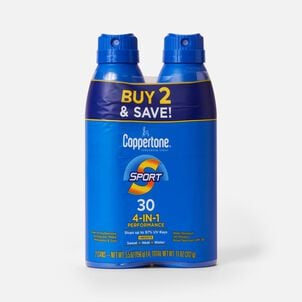Travel Sized Sunscreen: HSA Eligibility
Travel Sized Sunscreen: eligible with a Health Savings Account (HSA)HSA Eligible Suncare
Suncreens with SPF of 15 or higher and broad spectrum (UVA, UVB) protection are eligible.
What is travel sized sunscreen?
Travel sized sunscreen is the same substance as normal sunscreen when it has been packaged and sold in a smaller (travel sized) container. Normally, sunscreen is sold in bottles generally sized at 12 ounces and larger. Travel sized sunscreen might be sold in bottles as small as 2 ounces, or more generally around 4 ounces. Travel sized sunscreen is designed for use in purses and smaller carrying items to allow individuals to take sunscreen without the excess weight and space requirements of normal-sized sunscreen containers.
What does sunscreen protect against?
Sunscreen helps protect skin against the sun's harmful ultraviolet rays that can cause harmeful diseases like skin cancer over time. Anyone can get skin cancer, regardless of age, gender, or race. People with fairer skin or a history of skin cancer in the family may be at higher risk. An estimated one in five Americans will develop skin cancer in their lifetime (SkinCancer.org).
The American Academy of Dermatology recommends looking for broad-spectrum protection (protects against both UVA and UVB rays), a Sun Protection Factor (SPF) of 30 or higher, and water resistance in a sunscreen. SPF is the number that corresponds with the amount of time you can stay out in the sun without getting sunburned. However, a lot of factors can influence and the decrease the amount of time. For example, water and sweat can wash off sunscreen or if sunscreen is applied unevenly or infrequently in the span of time you are outdoors.
How effective is sunscreen in the water and outside?
A water resistant sunscreen maintains the same SPF level after 40 minutes of water exposure. Water can still wash off sunscreen that is not applied properly, so apply often if you plan to be in the water for an extended period of time. Also consider for looking for the ingredients zinc oxide and titanium dioxide in your sunscreen. These additional ingredients help protect against UVA rays that cause deeper skin damage.
Use sunscreen anytime you plan to be outside. The sun emits harmful rays year-round, even on cloudy days. Snow, sand, and water increase the need to apply sunscreen since they reflect the sun's rays. Make sure to apply sunscreen 15 minutes prior to exposure and reapply every two hours.
What types of sunscreens are there?
Cream-based sunscreen is best for dry skin and the face. Gels are great for hairy areas and sticks are great to use around the eye and are often made into chapstick for the mouth. Sprays are preferred by parents because of their convenience with children, but make sure to spray sufficiently in all areas of the skin and then rub it in if you choose this kind. There are also sunscreens specifically for people with sensitive skin and young children.





















